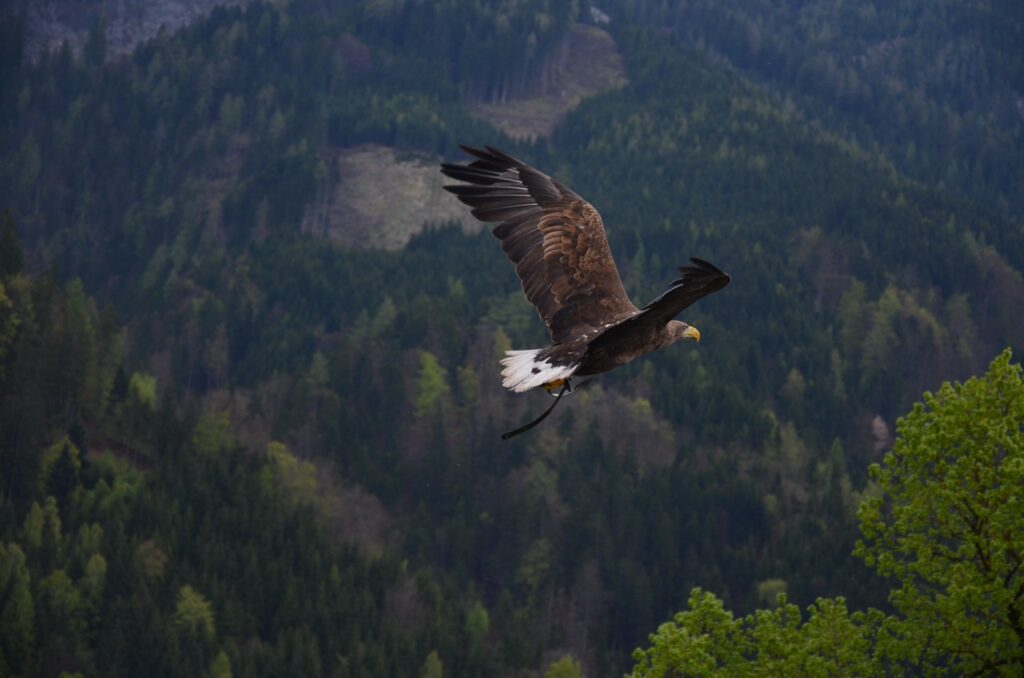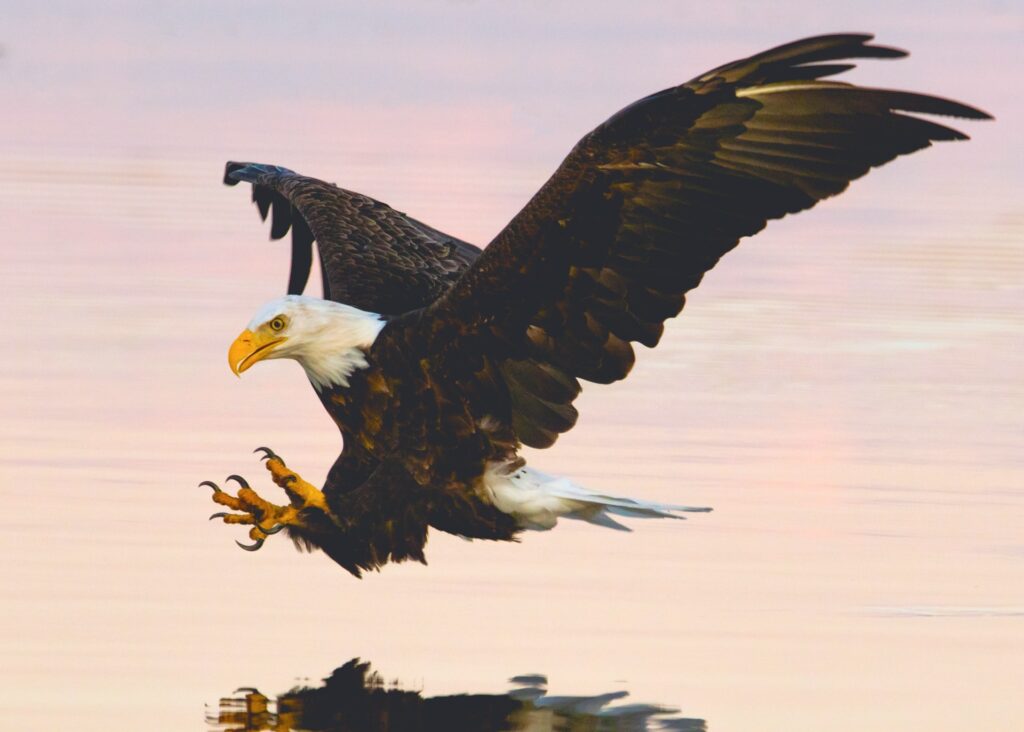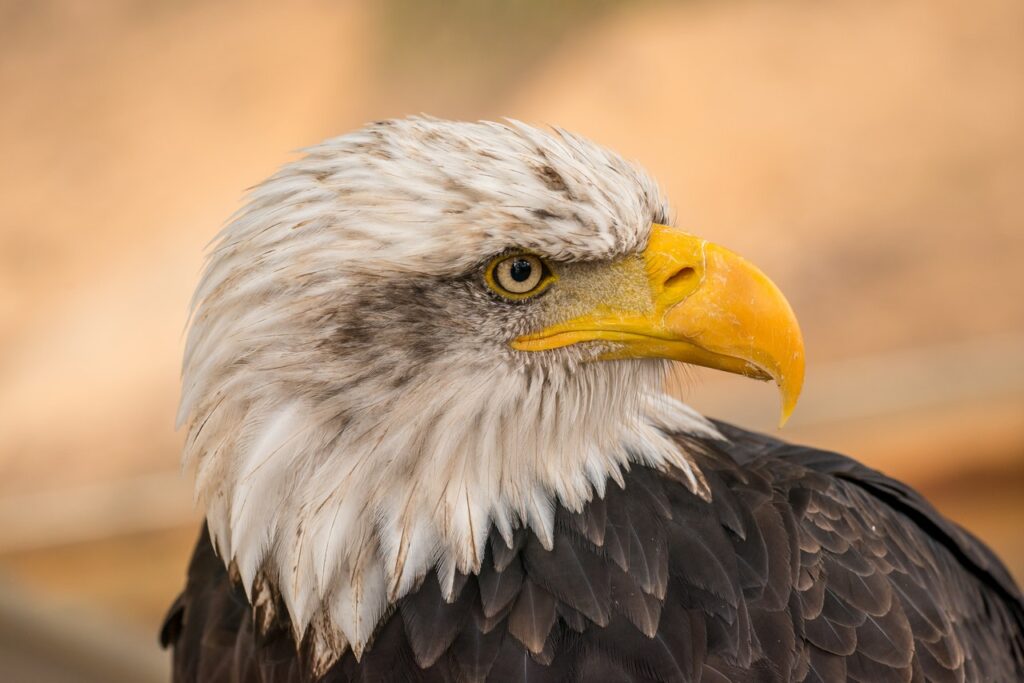When it comes to status symbols, eagles are one of the most popular. The reason for being a symbol is that eagles are majestic creatures in their own right. A lot of countries have eagles on their flags. Even more, countries have these birds as their national birds. Countries like the United States of America, also have them on their coat of arms and have bald eagles as their national bird.
Seeing an eagle in action is breathtaking. Known for their speed, size, and strength, these birds are masters of the sky. Whether you’re in the open prairies or lush jungles, you’ll be sure to see an eagle. However, due to irresponsible hunting and other problems, eagle populations all over the world are dwindling.
Admiration may not be enough to help save these amazing creatures. Thankfully, countries are noticing and starting to do their part. For one, many governments are creating sanctuaries and reservations solely for helping eagles repopulate. With that said, here are some more interesting eagle facts that you should know about:
1. How many species of eagles are there?

Eagles are mainly inhabited in Eurasia and Africa, where there are more than 60 species. Only 9 species inhabit Central and South America, and 2 species can be found in North America.
2. An Eagle’s Lifespan
On average, a healthy eagle in the wild can live up to 20-30 years. The oldest known eagle to live out in the wild was reported to be 38 years old. With increasing human activity, it’s getting rare to see eagles who even get to live for more than 20 years. Eagle populations are being threatened all over the world because of hunting and trapping.
To help with conservation efforts, governments are now creating reservations for eagles. Speaking of lifespans, one of the most exciting eagle facts is that eagles live considerably longer in captivity. If given the proper care and nutrition, eagles born in captivity can live up to an astounding 50-70 years.
3. The Eagles are persistent

We have already mentioned that the average lifespan of an eagle is 30 years. Those are the years when his sharp beak bends, his claws become weak, and his old and heavy wings get stuck in his chest and prevent him from flying. However, it does not have to be the end of life, but the time for a great life decision – whether to surrender and die or gather strength for the last flight to the top of the mountain, where the stone will boil until its beak falls off. Once it falls off, a new one will grow. The new beak will cut off the old claws, and then the old feather. After a painful five-month process, the eagle is once again capable of flying and hunting, extending its life by 30 years.
4. Till Death Do Us Part
Eagles are mostly monogamous. This fact means that once an eagle finds a partner, they will be together. There are only two reasons why eagles will seek a new partner. The first is that when one dies, the other will eventually find another eagle to mate with. The second reason why eagles find another partner is when one fails to return to the nest for a year.
5. How They Hunt
As with any bird of prey, eagles have extremely sharp claws. They use these claws to grab hold of their prey. Many people consider eagles hunting as a majestic and cruel way of seeing nature in real action. First off, eagles survey the area where they hunt. After circling an area and finding suitable prey, they then lock on to that target.
Once it feels comfortable, the eagle then swoops down with incredible speed, burying its claws into unsuspecting prey. Most of the time, small rabbits and other rodents instantly die from the impact and sharpness of the eagle’s claws. In case a prey still struggles, an eagle will occasionally grab hold of it and fly to extreme heights. As soon as it is high enough, the eagle will drop the prey down to incapacitate it once and for all.
6. The Biggest Eagles
Eagles can reach considerable size when they’re fully grown. The three biggest eagles in the world are the Steller’s sea eagle, the Harpy eagle, and the Philippine eagle. These eagles can grow up to more than 3 feet with a wingspan of 6 feet or more. Another thing that makes these eagles special is their strength.
The Philippine eagle was once known as the monkey-eating eagle. This name was because many people see these eagles effortlessly carry dead monkeys into the sky. The harpy eagle is also strong. In the lush jungles where it lives, harpy eagles have been known to carry sloths twice their weight. Due to their incredible speed and power, eagles have been known as the modern-day raptors.
There is, however, a larger species of eagles than the three previously mentioned. The largest eagle species are the Haast’s eagles. These eagles were twice the size of the largest harpy eagle. Haast’s eagles became extinct in the early 1400s because of overhunting and lack of food.
7. The Best Eyesight

Speed, strength, and sharp talon-like claws are always the most-mentioned weapons of an eagle. However, eagles have another incredible tool when they hunt. If you’re familiar with military snipers and accuracy, you’ll often hear about “Eagle Eyes.” Most people associate this term with accuracy because eagle eyes contain 1 million cones per mm² on its retina.
In comparison, humans only have 200,000 cones per mm², which makes an eagle’s eyesight way better. An eagle’s eyes are so good that they have no problem spotting a small object on the ground when flying heights of up to 10,000 feet.
8. The majestic creatures of the sky
Aside from lions and tigers, eagles are also perfect symbols when it comes to strength. Eagles are majestic creatures that deserve to be respected. Sadly, their population is dwindling. Hopefully, the facts mentioned above inspire people to their part in taking care of these formidable hunters.
Related Posts:
- PKT Cash Crypto – 4 Basic Facts You Should Know…
- 7 Facts You Need to Know Before Using Phone Tracking…
- 7 Interesting Facts about Glass Bottles You Probably…
- 10 Myths and Facts to Know About Cell Phone Tracking
- All you should know about Doctor Who season 12
- 7 Common Types of Workplace Injuries You Should Know…







